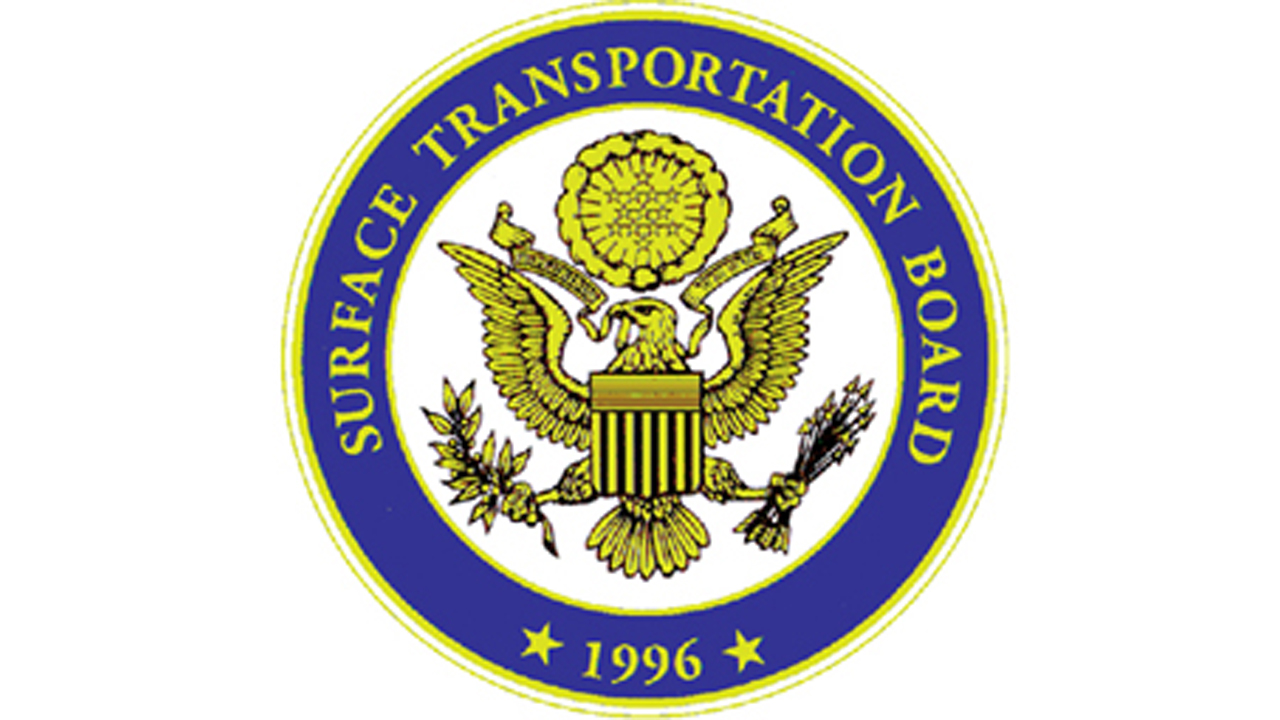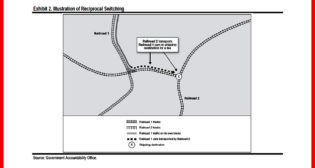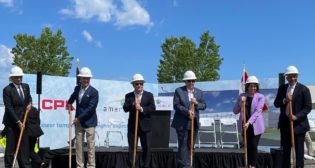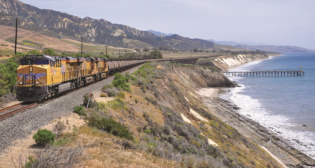
STB Strikes Down CN’s Chicago Interchange Proposal
Written by Marybeth Luczak, Executive Editor
The Surface Transportation Board (STB) has for the second time found that CN-subsidiary Wisconsin Central, Ltd.’s proposal “to unilaterally designate” the Belt Railway of Chicago’s (BRC) Clearing Yard as the location where it will receive traffic in interchange from Canadian Pacific Kansas City-subsidiary Soo Line Railroad Company “is not consistent with the reasonableness requirement of 49 U.S.C. § 10742.”
According to the STB, Wisconsin Central, Ltd. (CN) on April 14, 2020, filed a petition for declaratory order regarding its proposal to use Clearing Yard to interchange traffic from Soo Line Railroad Company in the Chicago, Ill., area. (Editor’s Note: Soo Line in 2020 was a subsidiary of Canadian Pacific; in 2023, CP merged with Kansas City Southern to form CPKC.)
“Under CN’s proposal, CP would be required to pay all of its own costs to reach Clearing for interchange with CN, including the switching fees due to BRC for service on BRC’s line,” the STB reported in its Jan. 29 decision (download below).
The STB on Oct. 30, 2020, held that CN “could not unilaterally designate Clearing as the location where it will receive traffic in interchange from CP.” It explained that “under § 10742, where there is a physical connection between the lines of two carriers, the receiving carrier must designate a location on its own line and provide the delivering carrier a free route to that location, but where there is no physical connection, the rights and obligations of § 10742 do not apply.” It further concluded that “§ 10742 requires a receiving carrier to ‘provide’ interchange facilities and that CN would not be providing anything by designating a third-party’s facilities as the interchange point and requiring CP to pay that party’s switching fees.”
CN sought judicial review, and in 2021 the United States Court of Appeals for the Seventh Circuit vacated the STB’s decision and remanded the matter to the STB for further consideration. According to the STB, the court said the “Board erred by concluding that carriers only have the ‘power to provide’ facilities that they own and that § 10742 only applies if two carriers physically intersect,” and the Board “conflated an assumption about who pays the fees of a third-party carrier with the question of ‘whether a receiving carrier [can] ever designate a willing third party to receive traffic on its behalf.’”
Following the remand, the STB said it solicited input from stakeholders and other interested parties. It has since reached the same decision for the following reasons (among others):
- STB reported that CN in 2008 “obtained approval to acquire EJ&E [Elgin, Joliet and Eastern Railway, which operates between Waukegan, Ill., and Gary, Ind.] based, in part, on its representation that the transaction would alleviate congestion in the Chicago area by moving interchange operations away from Clearing and to facilities on EJ&E (like Spaulding).” In 2010, after CN acquired EJ&E, CN and CP “mutually agreed to consolidate at Spaulding the interchange operations that previously occurred at multiple locations in the Chicago area, including at Clearing,” the STB said. “This agreement provided CP free passage to CN’s Spaulding interchange facilities,” and CN and CP continued to interchange traffic at Spaulding until 2019, “when CN decided to terminate the Spaulding interchange agreement.” According to the STB, CN did not identify “any changed circumstances that caused it to seek a departure from the interchange location that had been used for nearly a decade,” but stated that the issues justifying its decision “were due to the pre-existing physical geography of the facilities, and it asserted that no change in circumstances was needed to justify its decision.” According to the STB, “CN has proposed moving from the free interchange at Spaulding because CN believes it will benefit from avoiding the costs associated with interchanging at Spaulding and from being able to route more of its own traffic over its mainline near Spaulding.” The federal agency noted that this “divergence from CN’s longstanding practice and previous representations amplifies the unfairness of its proposal to unilaterally change the interchange location and force CP to pay all the associated fees. Thus, on balance, the parties’ practices and representations weigh against a finding that this proposal is reasonable.”
- The STB pointed out that the “ordinary practice in the rail industry is for carriers to reach mutual agreement on an interchange location, and the agency has long encouraged this.” It noted that “pursuant to industry custom, a receiving carrier in direct physical connection with its delivering carrier designates an interchange location on the receiving carrier’s own line, at or near the point of physical intersection, and provides free passage over its line to the point of interchange.” In the CN-CP case, the STB said it finds that the two railroads “are in direct physical connection in the Chicago area (at Spaulding) for purposes of the reasonableness analysis, and thus, the custom of free passage—which the parties followed from 2010 to 2019—is relevant.”
- According to the STB, CN argues that CP should pay the BRC fees because “industry practice dictates that where parties interchange via a third party, the delivering carrier pays the third-party fees.” However, the STB said “that practice takes place in the context of a mutual agreement and/or between parties without any physical intersection,” and it is “not aware, and CN has not provided any evidence, of a single instance—let alone an industry practice—of a receiving carrier compelling a delivering carrier to pay third-party switching fees when a direct interchange is readily available.”
- The STB reported that “[a]lthough the reciprocal nature of rail interchanges, on a system-wide basis, has generally incentivized carriers to cooperate with one another, an increase in disputes at individual points of interchange could threaten to destabilize the delicate balance and undermine the agency’s longstanding goal of promoting collaboration and mutual agreement.” The federal agency explained that if it were to “find in CN’s favor in this case, it would set a precedent allowing receiving carriers to unilaterally designate interchange points on third-party lines and require the delivering carriers to pay fees charged by the third parties for use of the interchange facilities.” Such a precedent, it said, “would allow receiving carriers to designate interchange points on third-party lines based on the benefit to the receiving carrier alone without regard to how the third-party fees affect the delivering carrier or the overall cost of the interchange operations.” In those circumstances, the STB said, “the incentives to cooperate and find mutually beneficial solutions would be reduced, while the incentives to seek opportunistic, one-sided results would be increased.” Such a holding, it pointed out, “could lead to widespread disruption of existing, mutually agreed interchange arrangements throughout the country if railroads took the decision as license to opportunistically shift costs to other railroads through unilateral interchange designations.”
“CN’s proposed designation [of Clearing as the interchange location] would depart from the parties’ own past practice, industry practice, and CN’s prior claims regarding the benefits of removing traffic from Clearing,” STB summed in its Jan. 29 decision. “It also attempts unfairly to shift significant costs associated with interchange facilities—which, under § 10742, CN is obligated to provide—to obtain a benefit for CN, while also setting a precedent that is likely to have detrimental effects on the national network.”
The STB noted, however, that its decision “does not speak to the merits of any alternative arrangement for interchanging traffic at Clearing (e.g., one that involves a different percentage allocation of the BRC fees—a change that could affect the reasonableness of the proposed interchange location).”



